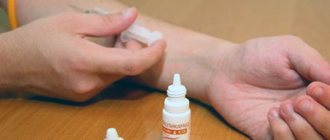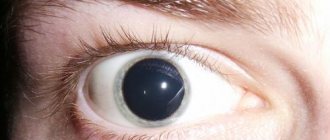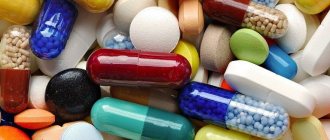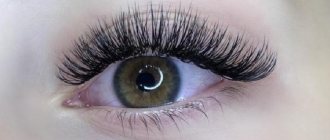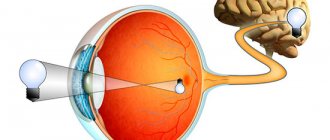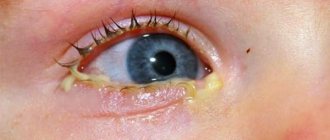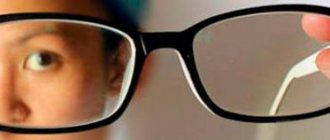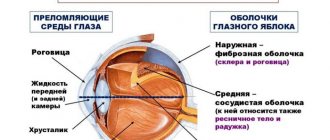Main signs of drug addiction
If we compare drug addiction with another, no less pressing problem of our time, alcoholism, then we can note their main difference: detecting drug addiction at the initial stage is more difficult than alcoholism. This is explained both by less noticeable symptoms and by the amazing secrecy of drug addicts. Therefore, you need to know the main signs of drug use in order to understand what exactly to look for. The sooner you can identify an addiction in a loved one, the more chances you have to help him.
First of all, it is worth remembering that drug addiction has many “faces”. Signs of drug use of different types will vary. They are expressed in the specific symptoms and behavior of the addict. Each type of drug affects a person differently. The addict gradually changes; he experiences changes in appearance, behavior, psyche, and social relationships. These signs, of course, will be different for a cocaine addict and for a marijuana smoker, but there are still basic general criteria by which one can notice the development of any drug addiction.
Changes in appearance
Some of the main signs of drug use will be the following changes in the appearance of the drug addict:
- The color of the skin changes; it may be excessively red or, on the contrary, unnaturally pale.
- The texture of the skin changes. Peeling, ulcers, bruises, unusual dryness or, on the contrary, excessive oiliness of the skin may appear.
- Often, drug addicts experience a change in pupil size that is inadequate to the amount of light. Sometimes the pupils can dilate so much that the iris is not visible, but can narrow to a point.
- In addition, a red vascular network appears periodically or constantly on the whites of the drug addict’s eyes. Some drugs may cause an unnatural “glassy” shine to the surface of the eyeball.
- Under the influence of drugs, the expression of the eyes changes. The gaze may be wandering, crazy.
- The emotional state of the patient is not related to what is happening. A range of emotions can appear on the face of an addict for no reason, and then it can become completely devoid of them.
- Injection marks on the body, purulent wounds.
- The tongue and lips may become covered with ulcers, sores, and cracks.
The appearance of a person who uses drugs gradually changes. He stops doing after himself, and untidiness appears in his appearance. This indifference to one’s appearance can lead to poor hygiene: dirty hair, overgrown nails, and so on. The patient may use the same clothes for many days in a row without washing them. Typically, the person will wear something with long sleeves to hide the needle marks. Often drug addicts, even in not very sunny weather, wear dark glasses so that others do not see the condition of their eyes.
Changes in health status
External signs of drug use are not always enough to determine whether a person is addicted to drugs or not. Therefore, it is worth paying attention to his state of health. Drug addiction is a disease that negatively affects the condition of all internal organs of a person. In addition, during the period of withdrawal syndrome, a particular deterioration in health occurs, which manifests itself in a number of symptoms. Let's list those that should especially alert you, especially when coupled with external signs.
- A person’s body weight can change dramatically and for no reason. A large number of kilograms are being lost, up to ten per week.
- The patient has constant thirst and dry mouth.
- Changes in eating behavior. A person may eat almost nothing for several days and then begin to overeat.
- Disturbance in sleep and wakefulness. A drug addict may not sleep at all for several days in a row, this is how some drugs work.
- There are jumps in blood pressure from low to excessively high.
- Persistent cough that cannot be treated with medication.
- Problems with the gastrointestinal tract of various kinds begin, from diarrhea to prolonged constipation.
Deterioration of health
- A novice drug addict can be identified by his appetite. An addicted person often experiences gluttony or, conversely, can go without food for several days. This is the first sign that your health is at risk; you need to pay attention to this fact.
- When consuming hashish or marijuana, you experience bad breath. Previously unknown rhinitis or frequent cough are the first signs of heroin use.
- The result of drug use is various disorders in the activity of the cardiovascular system, gastrointestinal tract, kidneys, and liver. Frequent dizziness and high blood pressure.
- Look into the eyes of a loved one, if no reaction occurs in the pupils, and he looks as if through you, then he is under the influence of a narcotic substance.
Changes in the addict's behavior
The addict's behavior undergoes significant changes. He can completely change his social circle. Former interests lose their significance and are completely forgotten. New words appear in speech, and an atypical manner of behavior is observed. These signs of drug use can be seen in both teenagers and adults.
- Changing interests and hobbies, most often a person ceases to be interested in anything at all. Study, work, sports - everything is gradually abandoned.
- Old friends and acquaintances disappear, they are replaced by new people, often of unknown occupation and with a suspicious appearance.
- The addict becomes deceitful, cunning and secretive. He almost always doesn’t say something and doesn’t answer many questions. It becomes unclear to you what he is doing and where he spends his time.
- The style and manner of communication are changing. Drug addicts often speak reluctantly, briefly, and are emotionally unbalanced. Slang words and swear words may appear in the conversation.
- Problems with study and work begin, associated with repeated absences and absenteeism.
- Sudden and frequent mood changes are observed. A drug addict can show causeless aggression even towards close people, which he would never have allowed himself to do before.
- A person’s personal qualities change, he loses moral values. Forced to constantly look for money for drugs, he gets it through lies and begins to steal.
Miotic type
Ambitious people, careerists and opportunists most of the time have constricted pupils. They live for tomorrow and somewhere out there, planning for a future that they look forward to and that they look forward to. A significant portion of people in Western society belong to this type. You will never see someone with dilated pupils under stress unless they have snorted cocaine.
A number of drugs cause pupillary constriction. During a crisis, the pupils of mentally ill people shrink almost to the size of a needle's eye, which gives them a characteristic crazy look. But the gaze is completely devoid of any content not only in drug addicts or sick people - the same can happen from anger. Beware of beautiful, but too transparent eyes with tiny pupils! Very often they reveal unscrupulous individuals. Such constriction of the pupils signals minimal, as far as possible, emotional activity, but increased cognitive activity. Otherwise, strong emotional activity will be expressed in progressive dilation of the pupils.
Each of us has a certain average pupil size. If you are busy with parasitic thoughts or are afraid of something, your pupils will be predominantly constricted. If your psychological state is relaxed or contemplative, your pupils will be slightly dilated. A good way to measure positivity is to simply look in the mirror. I advise people who suffer from parasitic thoughts to always have a small mirror with them and look into it every time you think about something positive. A timely glance can help assess the success of cognitive behavioral therapy and even eradicate parasitic thoughts.
The appearance of strange objects
Items that may serve as a sign of drug addiction in a family member deserve special attention. If you find strange objects at home that are unclear where they came from, this is a very serious reason to take a closer look at the situation and other symptoms. There is a high probability that your loved one has become addicted to drugs. Here's a list of similar items:
- Syringes, medicine bottles.
- Capsules and tablets, and they can be without packaging at all.
- Smoking pipes, plastic bottles with foil instead of a cork.
- Bundles, bags with powder, small crystals, dried crushed plants, a mass similar to plasticine with a specific smell.
- Cigarettes with a "sleeve".
- Precious metals scales.
- Tourniquets for tightening veins.
- Fire-burnt spoons.
- Moment glue and acetone.
Symptoms of drug addiction at different stages of the disease
As we noted above, various drugs cause specific symptoms in addition to the main ones. The stages of drug addiction development will always be the same. Each stage has its own characteristics, which we will describe below. True, there are drugs, when used, the disease progresses more rapidly, and there are addictions that last for several years, but the essence does not change.
- Signs of the first stage of drug addiction. At this stage, the disease is most difficult to see; physical symptoms are little manifested: the skin still has a normal appearance, not covered with pimples and ulcers. You can take a closer look at the condition of the pupils. But what betrays a drug addict most of all is his behavior. This is irritability; an addict can “freak out” over the most insignificant reason, or even without it. Already during this period, a person’s social circle changes. As the second stage of drug addiction approaches, noticeable health problems may begin: runny nose and cough, changes in weight. When using narcotic drugs, the emotional state becomes extremely unstable; in a few minutes a person can express the whole gamut of emotions from joy to sobs.
- Signs of the second stage of drug addiction. If during the first stage the addict was dependent on drugs only psychologically, now he has developed a stable physical dependence. This means that after a certain period of time he needs to take the next dose of the drug so that withdrawal does not begin. The appearance becomes unkempt, no time is given to it, hygiene is kept to a minimum. He is no longer interested in anything except how to find money for drugs. Health problems appear. Drug addiction affects the face and body: bags under the eyes, ulcers and bruises on the arms and other parts of the body, severe thinness. Weakened immunity caused by drug use leads to persistent infectious diseases and high blood pressure. A drug addict cannot sleep at night or for several days. Problems begin at work and at school, and often he simply leaves there. There is a breakdown in relationships with family members, and constant conflicts arise. The drug addict becomes asocial and communicates little with others. The patient is unpredictable and hysterical, lies, begs for money, and begins to steal.
- Signs of the third stage of drug addiction. At this stage, drug addiction manifests itself in its entirety. The body is completely exhausted due to the disease, there are constant problems with the gastrointestinal tract, the skin is covered with ulcers and bruises, teeth rot and fall out. Naturally, there is no talk of any attention to clothing and hygiene. A person physically and psychologically degrades. A drug addict is almost always depressed, completely loses interest in life, and breaks off all ties with society. His life now is an eternal search for the next dose of drugs.
Causes of constricted pupils in healthy eyes
If the eye disease is not diagnosed, then the number of causes is significantly reduced. For example, pregnancy and the physiological processes associated with gestation are quite capable of leading to miosis.
The entry of the active substance into the body also causes this reaction. This is not about illness. This may be a reaction of a healthy eye to the components of a particular medication.
Miosis can often be observed in infants. But this is a normal condition of the pupils of a newborn. After all, he is just learning to use his eyes, his visual function is developing and his eyes are adapting to new conditions. There's nothing wrong with that either.
Another cause of miosis is strong emotions. Any stimulus matters. For example, anger, rage, anger lead to temporary miosis. This is especially pronounced if a person tries to hide his feelings. But this is not a disease and this condition does not require treatment. The miosis will pass along with the emotional intensity and the pupil will become normal.
Return to contents
Signs of addiction to various drugs
Signs of using specific drugs have specific characteristics, here are some of them:
- Opium addiction. This group includes natural and artificial opiates. Drug addicts who use them are characterized by complete indifference to the surrounding reality, quiet and slow speech. Signs of opium addiction are drowsiness, lack of concentration, and a desire to be alone. The pupils are constricted, breathing and heart rate are slow.
- Cannabinoids. Under the influence of a drug, the addict is sociable, active, and talks a lot. After which one may become despondent, paranoia and panic attacks are often observed. In addition, addicts can be recognized by their constant thirst and strong appetite, which appears periodically.
- Psychostimulants. When using such drugs, a drug addict can be full of strength and energy for several days, while he does not eat or sleep. The addict is talkative, always trying to do something, but often this turns into meaningless fuss. A good mood can suddenly give way to aggression and thoughts of suicide.
- Hallucinogenic drugs. As we can see from the name, the behavior of such a person will sooner or later show signs of hallucinations. He can talk to himself or see things that other people don't see. In such addicts, blood pressure jumps, a rapid pulse, dilated pupils, and dry skin are observed. When using hallucinogens, sometimes there is a loss of coordination of movements, as well as a complete loss of control over oneself.
Masking constricted pupils
The problem of narrow pupils is most often experienced by those drug addicts who use opium drugs. In order to give the pupils a normal appearance, they use a medicine that normally treats stomach diseases. The name of this drug is becarbon.
This medicine has a side effect - when you take it, your pupils dilate. It is this effect that adherents of heroin, opium from poppy straw and crocodile use. In order to dilate the pupils, pink tablets of the drug becarbon are ground into a fine powder and diluted with water. After which the drug solution is instilled into the eyes, a few drops at a time. Therefore, packaging such a drug in the bag or pocket of a friend or relative should alert his loved ones. After all, this may mean that the person is a drug addict and uses strong opiate drugs. It must be said that the drug becarbon often dilates the pupils unevenly.
One of them turns out to be wider than the other. This is due to the fact that the dosage that goes into both eyes may be different, for example two drops versus three. You can also recognize a drug addict by such pupils. But the worst thing is that this drug, used in this way and not for its intended purpose, has a very detrimental effect on human vision. Therefore, very soon the drug addict who regularly used it, the sharpness of the picture of the world drops greatly and a cloudy and unclear movie appears before his eyes.
There are other medications that can dilate the pupils in the same way as becarbonate. These include, in particular, atropine and drugs from its group.
Help from specialists for drug addiction
The features of various addictions can be listed for a long time, but the most important thing is not to miss the main signs of drug addiction and seek help in a timely manner. The specialist will determine the type of addiction and select the appropriate treatment. Please note that today specialized drug treatment clinics provide free 24-hour telephone consultations, as well as provide motivation and transportation for drug addicts to the clinic. At the first signs of drug addiction, contact a medical facility and get timely advice from a specialist. This will help you avoid many problems and preserve the health and life of your loved one.
